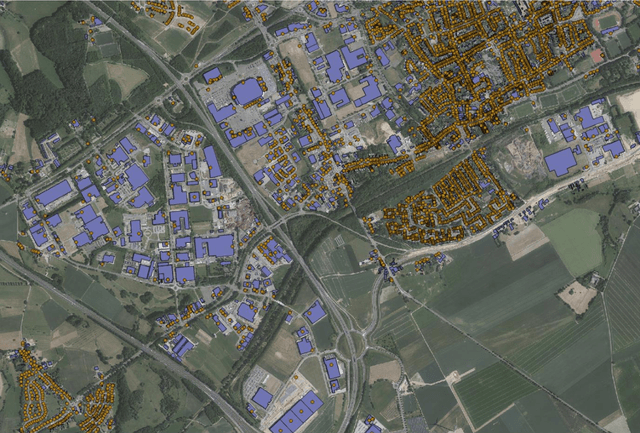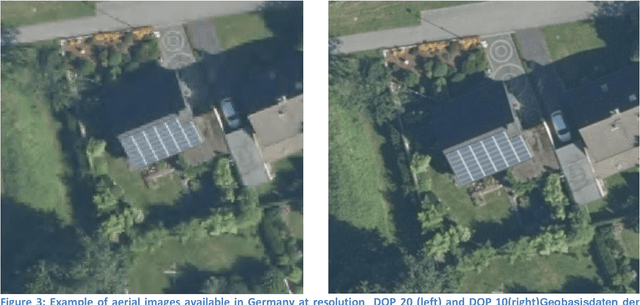Clara Schartner
Destatis
Monitoring Spatial Sustainable Development: semi-automated analysis of Satellite and Aerial Images for Energy Transition and Sustainability Indicators
Sep 12, 2020



Abstract:This report presents the results of the DeepSolaris project that was carried out under the ESS action 'Merging Geostatistics and Geospatial Information in Member States'. During the project several deep learning algorithms were evaluated to detect solar panels in remote sensing data. The aim of the project was to evaluate whether deep learning models could be developed, that worked across different member states in the European Union. Two remote sensing data sources were considered: aerial images on the one hand, and satellite images on the other. Two flavours of deep learning models were evaluated: classification models and object detection models. For the evaluation of the deep learning models we used a cross-site evaluation approach: the deep learning models where trained in one geographical area and then evaluated on a different geographical area, previously unseen by the algorithm. The cross-site evaluation was furthermore carried out twice: deep learning models trained on he Netherlands were evaluated on Germany and vice versa. While the deep learning models were able to detect solar panels successfully, false detection remained a problem. Moreover, model performance decreased dramatically when evaluated in a cross-border fashion. Hence, training a model that performs reliably across different countries in the European Union is a challenging task. That being said, the models detected quite a share of solar panels not present in current solar panel registers and therefore can already be used as-is to help reduced manual labor in checking these registers.
Monitoring spatial sustainable development: Semi-automated analysis of satellite and aerial images for energy transition and sustainability indicators
Oct 11, 2018



Abstract:Solar panels are installed by a large and growing number of households due to the convenience of having cheap and renewable energy to power house appliances. In contrast to other energy sources solar installations are distributed very decentralized and spread over hundred-thousands of locations. On a global level more than 25% of solar photovoltaic (PV) installations were decentralized. The effect of the quick energy transition from a carbon based economy to a green economy is though still very difficult to quantify. As a matter of fact the quick adoption of solar panels by households is difficult to track, with local registries that miss a large number of the newly built solar panels. This makes the task of assessing the impact of renewable energies an impossible task. Although models of the output of a region exist, they are often black box estimations. This project's aim is twofold: First automate the process to extract the location of solar panels from aerial or satellite images and second, produce a map of solar panels along with statistics on the number of solar panels. Further, this project takes place in a wider framework which investigates how official statistics can benefit from new digital data sources. At project completion, a method for detecting solar panels from aerial images via machine learning will be developed and the methodology initially developed for BE, DE and NL will be standardized for application to other EU countries. In practice, machine learning techniques are used to identify solar panels in satellite and aerial images for the province of Limburg (NL), Flanders (BE) and North Rhine-Westphalia (DE).
 Add to Chrome
Add to Chrome Add to Firefox
Add to Firefox Add to Edge
Add to Edge